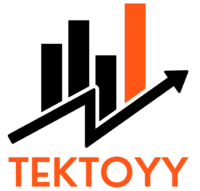The dream of financial freedom is universal, but the path to achieving it often feels shrouded in mystery. We see stories of overnight success and complex investment schemes, leaving many to wonder: how do regular people actually build lasting wealth? The answer is simpler and more accessible than you think. It isn’t about a single lucky break; it’s about consistently applying smart financial principles over time.
Wealth isn’t built in a day. It’s constructed brick by brick, decision by decision, decade by decade. The strategies that serve you well in your 20s will evolve as you enter your 30s, and shift again in your 40s and beyond. This guide is your blueprint. We’ll break down the key actions, mindsets, and strategies you need to master at each stage of your life to build a secure and prosperous future.
The Universal Foundations of Wealth Building

Before we dive into age-specific strategies, there are core principles that form the bedrock of any successful financial journey. Mastering these fundamentals is non-negotiable, whether you’re 22 or 42.
Why Starting Early is Your Financial Superpower
If there’s one concept that can change your financial life, it’s compound interest. Albert Einstein reportedly called it the eighth wonder of the world, and for good reason. In simple terms, it’s the interest you earn on your original money, plus the accumulated interest. It’s your money making money, which then makes more money.
Think of it like a snowball rolling down a hill. It starts small, but as it rolls, it picks up more snow, growing larger and faster. The longer the hill (your time horizon), the bigger the snowball (your wealth) will be at the bottom. A dollar invested at age 25 is exponentially more powerful than a dollar invested at age 45. This single factor is the most compelling reason to start your wealth-building journey today, no matter how small you begin.
Master Your Mindset: The Psychology of Wealth
Building wealth is more about behavior than it is about complex math. Before any strategy can work, you must cultivate a healthy relationship with money.
- Shift from a Scarcity to an Abundance Mindset: Stop thinking, “I don’t have enough.” Start thinking, “How can I create more?” This shift opens you up to opportunities for side hustles, career advancement, and investing.
- Embrace Delayed Gratification: The ability to forgo a small pleasure today for a much larger reward tomorrow is the hallmark of every successful saver and investor. That daily $7 latte could be a powerful wealth-building tool when invested over 30 years.
- Automate Your Success: Willpower is finite. The most effective way to save and invest consistently is to remove yourself from the equation. Set up automatic transfers from your checking account to your savings, retirement, and investment accounts every payday. Pay yourself first, always.
The Bedrock of Your Financial House: Budgeting and Emergency Funds
You can’t build a skyscraper on a shaky foundation. In finance, your foundation is a clear budget and a robust emergency fund.
- Budgeting Isn’t a Restriction; It’s a Plan: A budget is simply a tool that tells your money where to go, instead of wondering where it went. Use the 50/30/20 rule as a starting point: 50% of your take-home pay for needs (housing, utilities, groceries), 30% for wants (dining out, hobbies), and 20% for savings and debt repayment. Use apps like Mint or YNAB (You Need A Budget), or a simple spreadsheet to track your income and expenses.
- The Emergency Fund: Your Financial Firewall: Life is unpredictable. Job losses, medical emergencies, or unexpected car repairs can derail your financial progress if you’re unprepared. Your first savings goal should be to build an emergency fund that covers 3 to 6 months of essential living expenses. This money should be kept in a liquid, high-yield savings account—not invested in the stock market. It’s your insurance policy against debt.
Conquering High-Interest Debt: The Wealth Killer
It is mathematically impossible to build wealth while you are servicing high-interest debt. Credit card debt, with average interest rates often exceeding 20%, is a financial emergency. It’s like trying to climb a mountain while being tethered to a weight pulling you down.
Create a plan to aggressively pay it off. Two popular methods are:
- The Avalanche Method: Focus on paying off the debt with the highest interest rate first, while making minimum payments on the others. This saves you the most money in interest over time.
- The Snowball Method: Focus on paying off the smallest balance first, regardless of the interest rate. This provides quick psychological wins, building momentum and motivation.
Choose the method that works for you and stick with it. Eliminating this debt is a direct investment in your future.
Building Wealth in Your 20s: Laying the Groundwork

Your 20s are the launching pad for your entire financial life. You have the single most valuable asset on your side: time. The decisions you make now will have an outsized impact on your future self.
Focus on Your Greatest Asset: Your Earning Potential
The most powerful wealth-building tool at this stage is your ability to earn an income. Invest in yourself. Seek certifications, learn new skills, negotiate your salary, and don’t be afraid to change jobs for a significant pay increase. Increasing your income by a few thousand dollars per year in your 20s has a greater long-term impact than finding the perfect investment.
Embrace the Stock Market (Even if You’re Scared)
Investing in your 20s can feel intimidating, but it’s crucial. You don’t need to be a stock-picking genius. The simplest and most effective way to start is with low-cost index funds or ETFs (Exchange-Traded Funds). These funds hold a basket of hundreds or thousands of stocks (like the S&P 500), providing instant diversification.
Start a Roth IRA Today
A Roth IRA is a retirement account where you contribute after-tax dollars. The magic happens later: all your earnings and withdrawals in retirement are 100% tax-free. Because you are likely in a lower tax bracket in your 20s than you will be later in life, paying the taxes now is a brilliant long-term strategy.
Get Your 401(k) Match—It’s Free Money
If your employer offers a 401(k) retirement plan with a matching contribution, you must contribute enough to get the full match. For example, a company might match 100% of your contributions up to 5% of your salary. If you don’t contribute that 5%, you are literally turning down a 100% return on your money. There is no other investment that can guarantee that.
Accelerating Your Wealth in Your 30s: Shifting into High Gear

By your 30s, your income is likely higher, and your career is more established. You’ve laid the foundation, and now it’s time to accelerate. This decade is about optimization and scaling up your efforts.
Max Out Your Tax-Advantaged Retirement Accounts
Your goal should be to move from simply contributing to your retirement accounts to maxing them out, or getting as close as you can. For 2025, this means aiming to contribute the maximum allowable amount to your 401(k) and your Roth IRA. This dramatically increases the speed at which your wealth compounds.
Diversify Your Investments Beyond the Basics
While S&P 500 index funds are a fantastic core for any portfolio, your 30s are a good time to explore further diversification. This could include:
- International Stock Index Funds: To gain exposure to economies outside of the U.S.
- Real Estate: This could be through Real Estate Investment Trusts (REITs), which are traded like stocks, or through direct ownership of a rental property if you have the capital and risk tolerance.
- Small-Cap or Mid-Cap Funds: To invest in smaller companies with potentially higher growth prospects.
Plan for Major Life Goals
Your 30s often come with significant life events like marriage, buying a home, and starting a family. Your financial plan needs to grow with you.
- Life and Disability Insurance: If people depend on your income, these are no longer optional. They are essential protections for your family’s financial security.
- Saving for a Down Payment: Systematically save for a home in a separate high-yield savings account.
- College Savings: If you have children, consider opening a 529 plan. These are tax-advantaged investment accounts designed specifically for education expenses.
Wealth Building in Your 40s and Beyond: Optimization and Legacy
In your 40s and 50s, you are in your peak earning years. The goal shifts from pure accumulation to a dual focus on continued growth and preservation of capital. You are no longer just building for retirement; you’re building a lasting legacy.
Take Advantage of Catch-Up Contributions
The IRS allows individuals aged 50 and over to contribute extra money to their retirement accounts. These “catch-up contributions” are a powerful tool to supercharge your savings as you approach retirement.
Re-evaluate Your Risk Tolerance
As you get closer to retirement, you may want to gradually shift your portfolio to be more conservative. This doesn’t mean selling all your stocks, but it might mean increasing your allocation to bonds and other less volatile assets to protect your nest egg from a major market downturn right before you need to start withdrawing from it.
Focus on Estate Planning
Wealth building isn’t just for you; it’s for the generations that come after you. Now is the time to get serious about estate planning. This includes:
- Creating a Will: To ensure your assets are distributed according to your wishes.
- Setting Up Trusts: To protect your assets and provide for your heirs in a structured way.
- Designating Beneficiaries: Ensure all your retirement accounts, life insurance policies, and other financial accounts have updated beneficiaries. This is crucial as these designations often override what’s written in a will.
Develop Passive Income Streams
While you’ve been building a portfolio of stocks and bonds, consider creating income streams that aren’t tied to your direct labor. This is the essence of financial freedom. Options include rental income from real estate, dividends from a stock portfolio, or royalties from creative work.
Your Journey to Financial Freedom Starts Now

Building wealth is a marathon, not a sprint. It’s a journey of a thousand small steps taken consistently over decades. It’s about paying off one credit card, setting up one automatic transfer, and making one smart investment at a time.
Don’t be discouraged by where you are today. The most important step is the next one you take. Whether you’re in your 20s, 30s, 40s, or beyond, the principles remain the same: spend less than you earn, invest the difference wisely, and let the power of time and compounding work its magic. Your future self will thank you for it.







